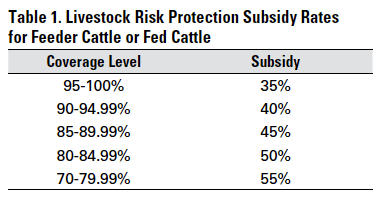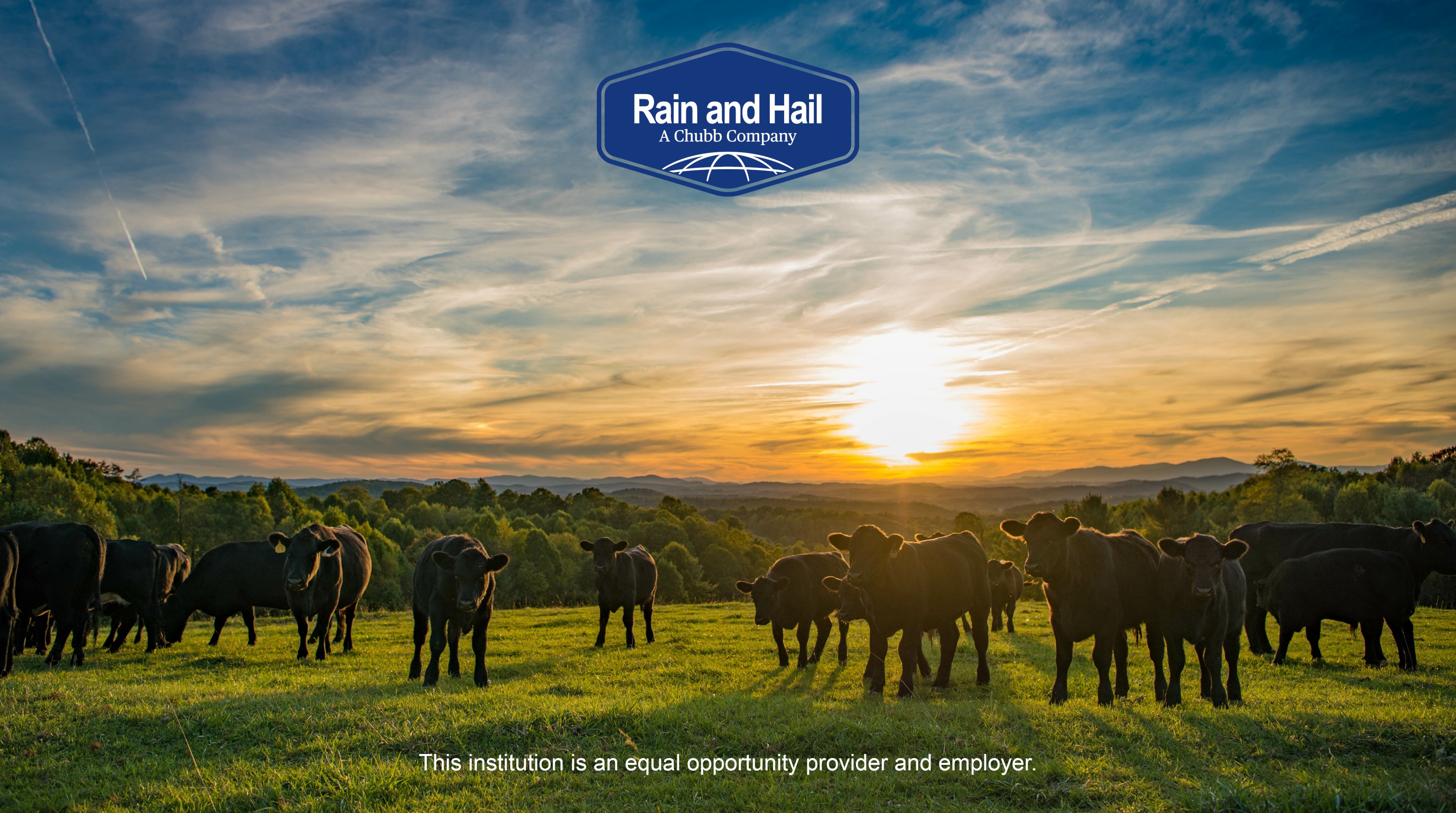Unlocking Development Potential: Bagley Risk Management Approaches
Unlocking Development Potential: Bagley Risk Management Approaches
Blog Article
Key Aspects to Take Into Consideration When Deciding On Livestock Threat Defense (LRP) Insurance Coverage
When evaluating alternatives for Animals Risk Security (LRP) insurance coverage, several key factors call for mindful consideration to make sure reliable risk administration in the farming field. Choosing the ideal insurance coverage choices customized to your certain animals procedure is critical, as is recognizing how exceptional expenses associate with the level of defense provided.
Protection Options
When thinking about Animals Danger Defense (LRP) insurance coverage, it is necessary to understand the different insurance coverage options readily available to alleviate risks in the farming market. Animals Risk Defense (LRP) insurance policy supplies various insurance coverage choices tailored to satisfy the varied demands of livestock producers. Bagley Risk Management. Among the key coverage alternatives is price coverage, which safeguards versus a decrease in market value. Producers can choose the insurance coverage degree that aligns with their price danger administration objectives, permitting them to protect their operations versus prospective monetary losses.
Another crucial coverage choice is the endorsement duration, which figures out the length of time the coverage holds. Manufacturers can select the recommendation period that ideal matches their manufacturing cycle and market conditions. Additionally, coverage degrees and rates vary based upon the type of animals being insured, offering producers the adaptability to customize their insurance policy prepares according to their particular demands.
Understanding the different insurance coverage options offered under Animals Danger Defense (LRP) insurance is crucial for producers to make enlightened decisions that efficiently secure their livestock procedures from market unpredictabilities.
Premium Expenses

Animals Threat Defense (LRP) insurance policy provides important protection choices customized to minimize dangers in the farming industry, with a considerable aspect to think about being the computation and framework of premium prices. When identifying premium prices for LRP insurance, numerous variables enter play. These consist of the kind and number of livestock being guaranteed, the insurance coverage degree picked, the current market costs, historic price data, and the length of the protection period. Insurance providers might also take into consideration the area of the ranch, as geographic elements can affect the general threat account.
Premium prices for LRP insurance policy are commonly calculated based on actuarial data and risk evaluation designs. Insurers evaluate historic information on livestock rates and manufacturing expenses to determine a proper costs that shows the degree of risk included. It is vital for livestock manufacturers to meticulously examine premium expenses and protection alternatives to guarantee they are properly secured against prospective financial losses because of adverse market problems or unexpected occasions. By understanding how superior expenses are calculated and structured, manufacturers can make educated choices when picking the appropriate LRP insurance plan for their operation.
Eligible Animals
The resolution of eligible livestock for Animals Risk Protection (LRP) insurance policy coverage involves mindful consideration of specific criteria and characteristics. Animals types that are typically qualified for LRP insurance policy consist of feeder cattle, fed livestock, swine, and lambs.
Feeder livestock, for instance, are frequently qualified for LRP coverage if they drop within specified weight ranges. Fed livestock may additionally be qualified, however they must fulfill specific weight and quality grade needs. Swine eligible for protection typically consist of market weight animals planned for slaughter. Lambs are an additional category of animals that can be considered for LRP insurance policy, with variables such as weight and age playing a vital role in identifying their qualification.
Before choosing LRP insurance for livestock, producers should very carefully assess the eligibility criteria detailed by the insurance coverage provider to guarantee their animals satisfy the essential requirements for protection.
Policy Versatility
Plan adaptability in Animals Danger Security (LRP) insurance policy permits manufacturers to customize coverage to suit their particular requirements and run the risk of administration methods. This adaptability encourages livestock producers to customize their insurance plan based upon aspects such as the kind of animals they have, Our site market problems, and private threat tolerance levels. One essential facet of plan adaptability in LRP insurance is the capability to pick coverage levels that line up with the manufacturer's monetary objectives and run the risk of direct exposure. Producers can choose protection degrees that secure them versus possible losses as a result of variations in animals costs, ensuring they are properly insured without overpaying for unnecessary insurance coverage. In addition, LRP insurance policy supplies adaptability in plan period, enabling producers to pick insurance coverage durations that ideal fit their manufacturing cycles and advertising and marketing timelines. By using adjustable options, LRP insurance policy allows manufacturers to efficiently handle their threat exposure while protecting their livestock procedures against unforeseen market volatility.
Cases Refine
Upon experiencing a loss or damages, producers can initiate the claims procedure for their Livestock Danger Security (LRP) insurance policy by without delay calling their insurance coverage carrier. It is important for producers to report the loss asap to expedite the claims procedure. When reaching out to the insurance coverage company, manufacturers will require to provide thorough information concerning the event, consisting of the day, nature of the loss, here are the findings and any kind of pertinent documents such as vet documents or market value.

After the evaluation is full, the insurance coverage carrier will choose pertaining to the claim and interact the end result to the producer. If the insurance claim is accepted, the manufacturer will get settlement according to the regards to their Livestock Danger Defense (LRP) insurance coverage. Bagley Risk Management. It is necessary for manufacturers to be familiar with the claims procedure to ensure a smooth experience in the event of a loss

Final Thought
To conclude, when choosing Livestock Risk Defense (LRP) insurance policy, it is necessary to take into consideration insurance coverage choices, premium expenses, eligible livestock, plan adaptability, and the cases procedure. These essential factors will help make certain that farmers and herdsmans are sufficiently safeguarded against possible dangers and losses connected with their animals operations. Making an informed choice based on these factors to consider can eventually lead to far better monetary security and comfort for livestock manufacturers.
Animals Risk Defense (LRP) insurance coverage offers various protection choices tailored to meet the diverse demands of animals producers.The decision of eligible animals for Animals Danger Defense (LRP) insurance protection involves mindful consideration of details criteria and features.Policy versatility in Livestock Threat Protection (LRP) insurance coverage allows producers to tailor protection to match their certain needs and run the risk of monitoring techniques.Upon experiencing a loss or damages, manufacturers can initiate the insurance claims procedure for their Livestock Danger Security (LRP) insurance by quickly calling their insurance policy company.In verdict, when selecting Livestock Danger Security (LRP) insurance policy, it is important to consider useful reference coverage alternatives, premium prices, qualified animals, plan flexibility, and the claims procedure.
Report this page